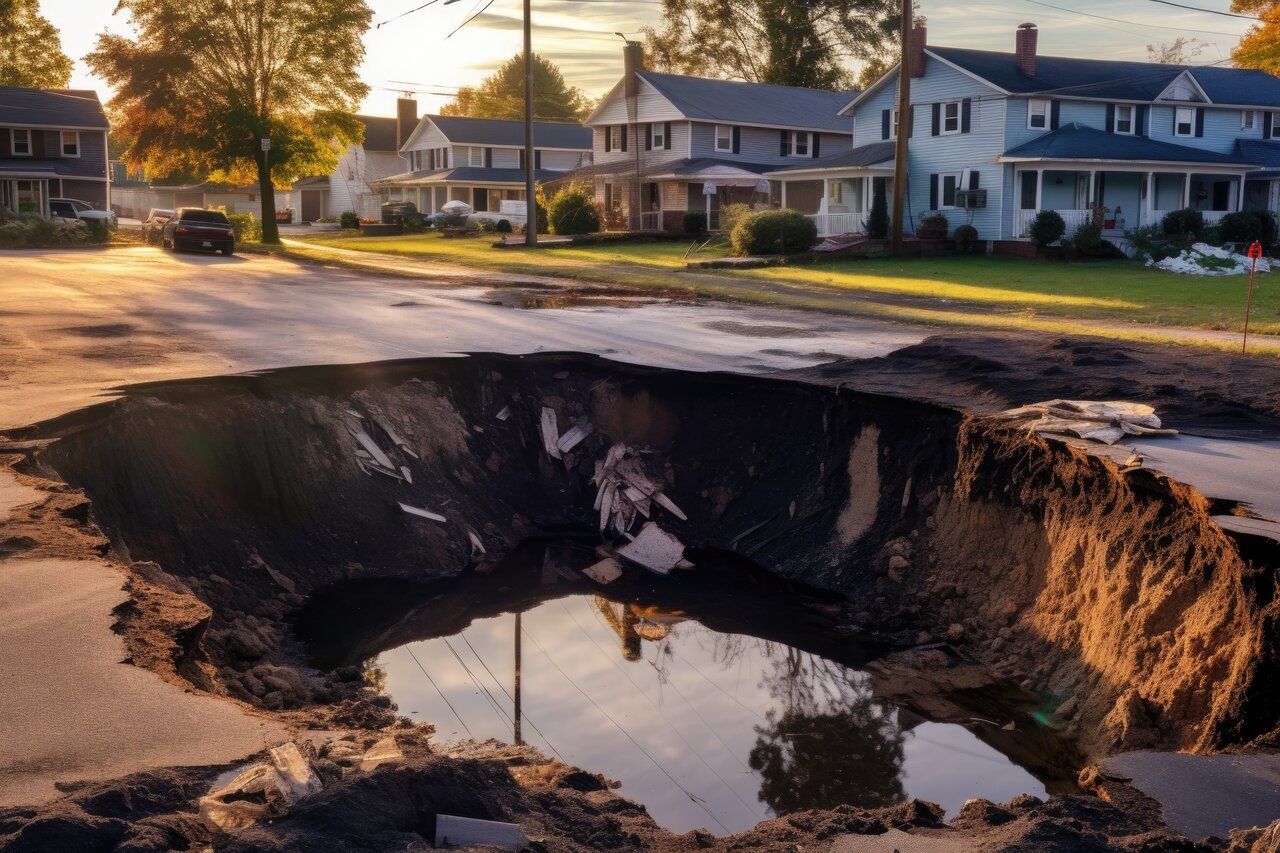By Joel Nelson on September 13, 2024 in News
One of them, measuring 100 feet wide and 50 feet deep, opened up at the center of a soccer complex in Alton, Ill., taking down a light pole, benches and artificial turf. Another one in Madera, Calif., consumed a truck trailer. Others forming in front yards in Highland City, Fla., and Las Cruces, N.M., swallowed vehicles and forced residents to evacuate their homes.

These are a few of the sinkholes that have been reported in the U.S. just this year.
Sinkholes occur when depressions in the ground have no natural external surface drainage, so when it rains, the water remains inside the sinkhole. Over time, the water erodes underlying soluble rocks such as gypsum or limestone, creating underground spaces and caverns. When the underground space becomes too big to support the land above it, the land surface collapses.
They typically vary from about three to 165 feet deep. The largest recorded U.S. sinkhole, in central Alabama, formed in 1972 and measures about 325 feet long, 300 feet wide and 120 feet deep.
While sinkholes are a natural phenomenon, human activity such as groundwater pumping, soil removal, drilling, and construction of dams and other water impoundments can weaken underlying rock and accelerate their development.
Damage caused by sinkholes totals at least $300 million annually, according to the U.S. Geological Survey. Many sinkhole collapses go unobserved in remote areas or are not reported to authorities.
Rare but meriting attention
Signs of potential sinkholes include slumping or falling trees or fence posts, plants that die as their water is drawn away, interrupted utility services and a circular pattern of ground cracks. While sinkholes can be ominous, they are “blessedly rare,” engulfing only a few of the more than 140 million housing units in the U.S. every year. A given home is “much more likely to get struck by lightning than swallowed by a sinkhole,” says Nick Gromicko, founder of the International Association of Certified Home Inspectors. But still, they can happen almost anywhere, so property occupants and purchasers should know the signs and risks of sinkhole activity.
If you suspect a sinkhole might be forming on your residential or commercial property, the U.S. Geological Survey recommends first ruling out human causes such as leaky underground pipes or old construction pits. Then consider engaging a professional geologist, geotechnical engineer or other expert to evaluate the situation and potential mitigations. Other resources include the state geological survey, utility companies that can check for damage to gas, electric, water or sewer lines, and qualified home inspectors. (The USGS doesn’t investigate individual sinkholes on private property.) Homeowner’s insurance policies most states do not cover damages caused by natural sinkholes.
Fortunately, many sinkholes can be repaired. “Most of the time, they can simply be filled in with soil,” Gromicko notes.
With larger cases, workers can inject grout into the hole to rebuild a foundation over the degrading bedrock. “It’s similar to a dentist filling a cavity,” says Anthony Randazzo, founder of Florida geotechnical engineering firm Geohazards Inc. “It sets and hardens and stabilizes it.”


